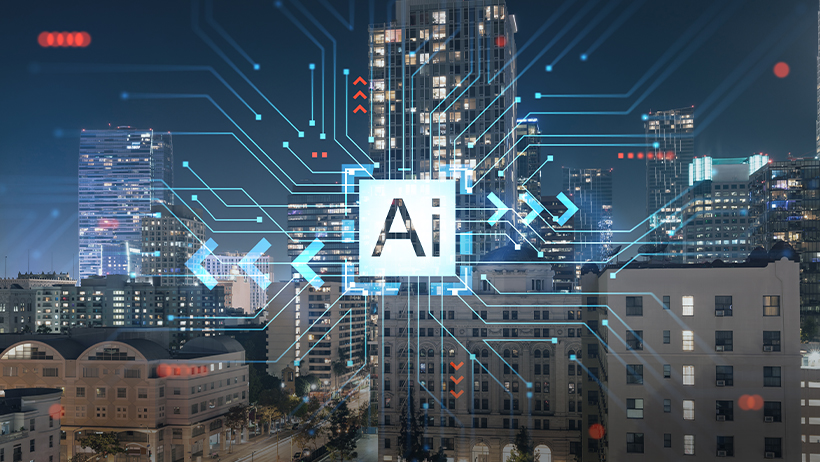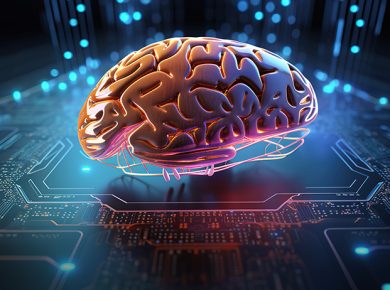Table of Contents
- How AI is Revolutionizing Disaster Response: Predicting and Preventing Communication Crises
- The Advantages of AI in Disaster Response
- Statistics Highlighting the Impact of AI in Disaster Response
- How AI Predicts and Prevents Communication Crises
- Real-World Example: AI in Action During Disasters
- Actionable Recommendations for Organizations
How AI is Revolutionizing Disaster Response: Predicting and Preventing Communication Crises
In today’s fast-paced world, the ability to predict and prevent crises before they happen is invaluable, especially when it comes to disaster response. Artificial intelligence (AI) is stepping up as a solution in these cases, offering powerful tools for communication crisis prediction and prevention.

In this article, we will:
- Explore the role of AI in disaster response.
- Understand how AI can predict and prevent communication crises.
- Discuss real-world applications and benefits of AI in crisis management.
- Support our insights with credible statistics to underscore the impact of AI.
The Advantages of AI in Disaster Response
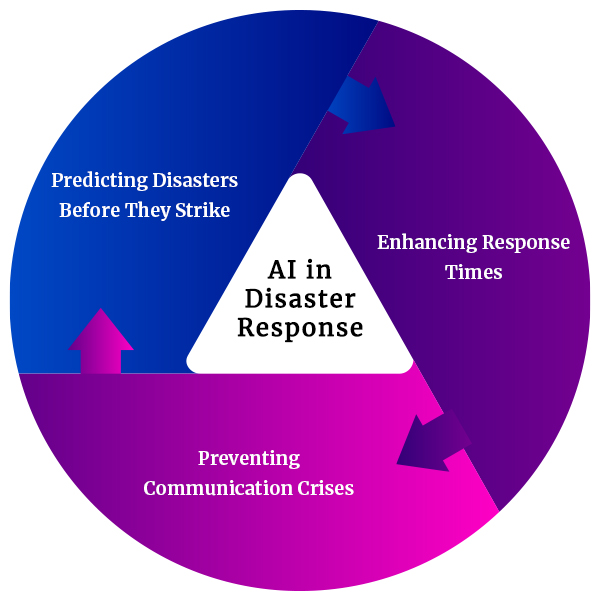
Predicting Disasters Before They Strike
- Advanced Data Analysis
AI algorithms can analyze vast amounts of data in real-time, identifying patterns that humans might miss. This capability is crucial in predicting potential disasters, whether natural or man-made.
Preventing Communication Crises
- Proactive Crisis Management
AI-driven tools can anticipate communication breakdowns by monitoring multiple channels for signs of misinformation, public sentiment shifts, or emerging threats. This enables companies and organizations to address issues before they escalate into full-blown crises.
Enhancing Response Times
- Real-Time Alerts
With AI, disaster response teams can receive real-time alerts, enabling them to act swiftly and effectively. This not only mitigates the impact of disasters but also ensures clear and accurate communication during critical moments.
Statistics Highlighting the Impact of AI in Disaster Response
- Accuracy: According to a report by Deloitte, AI can predict disaster events with up to 90% accuracy by analyzing historical data and current conditions.
- Speed: A study by IBM found that AI-powered systems can reduce the time it takes to identify and respond to potential crises by 50%.
- Effectiveness: The World Economic Forum reported that AI-driven disaster response strategies could reduce casualties and economic losses by 30%.
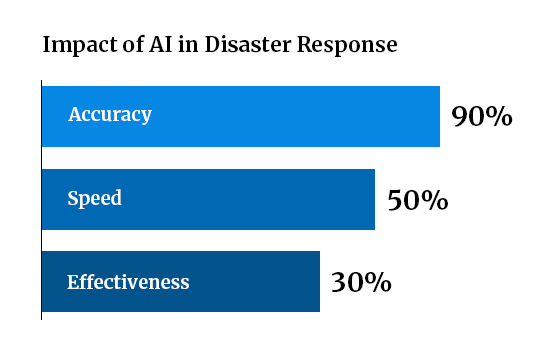
How AI Predicts and Prevents Communication Crises
Monitoring Public Sentiment
- Keeping a Finger on the Pulse
AI tools can scan social media, news outlets, and other online platforms to gauge public sentiment in real-time. By identifying shifts in sentiment early, organizations can address concerns or correct misinformation before it spirals out of control.
Identifying Misinformation
- Combatting Fake News
AI algorithms can detect patterns associated with misinformation, such as unusual spikes in content sharing or the rapid spread of certain narratives. This allows for timely interventions to prevent the spread of false information during a disaster.
Automating Crisis Communication
- Streamlining Messaging
AI can automate the creation and distribution of crisis communication messages, ensuring consistency and accuracy across all channels. This reduces the risk of mixed messages or delays in response, which can exacerbate a crisis.

Real-World Example: AI in Action During Disasters
Case Study: Google’s AI-Powered Crisis Response
Overview
- Google uses AI to provide real-time crisis alerts during natural disasters, such as hurricanes, earthquakes, and wildfires.
Process
- By analyzing weather data, social media activity, and historical disaster patterns, Google’s AI can predict the potential impact of these events and provide timely alerts to affected populations.
Outcome
- This proactive approach has significantly improved disaster preparedness and response, reducing the loss of life and property damage in vulnerable areas.
Actionable Recommendations for Organizations
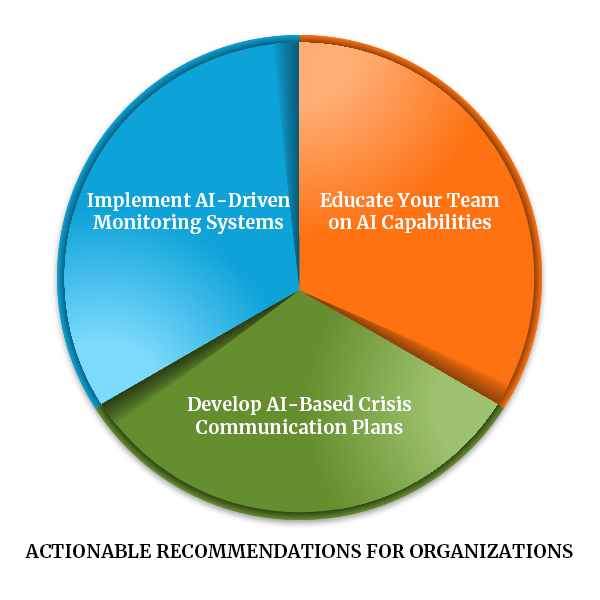
Implement AI-Driven Monitoring Systems
- Stay Ahead of the Curve
Invest in AI-powered tools that can monitor public sentiment and detect potential crises. Tools like Brandwatch or Crisis24 can help you stay informed and prepared for any communication challenges.
Develop AI-Based Crisis Communication Plans
- Be Prepared
Create a crisis communication plan that leverages AI to automate messaging and response efforts. This ensures that your team can act quickly and effectively, even in the most chaotic situations.
Educate Your Team on AI Capabilities
- Continuous Learning
Ensure that your disaster response team is well-versed in the capabilities of AI and how to use these tools effectively. Regular training and drills can help your team stay sharp and ready for any crisis.
AI is revolutionizing disaster response, offering unprecedented tools for predicting and preventing communication crises. By embracing AI, organizations can protect their reputation, ensure clear communication, and ultimately save lives.
Join our community at Growth Buzz for more insights, subscribe to our newsletter, and share your experiences in the comments. Together, we can leverage AI to create a safe and resilient world! 🌍
